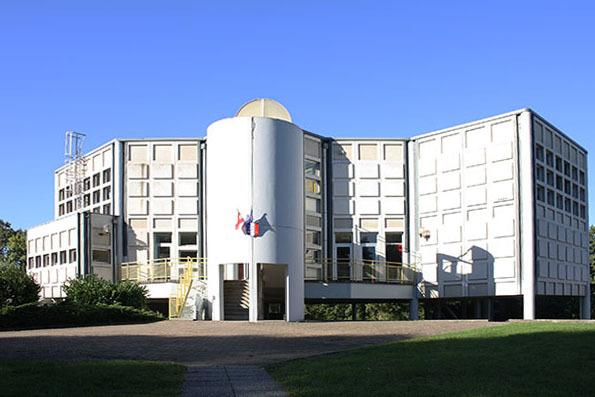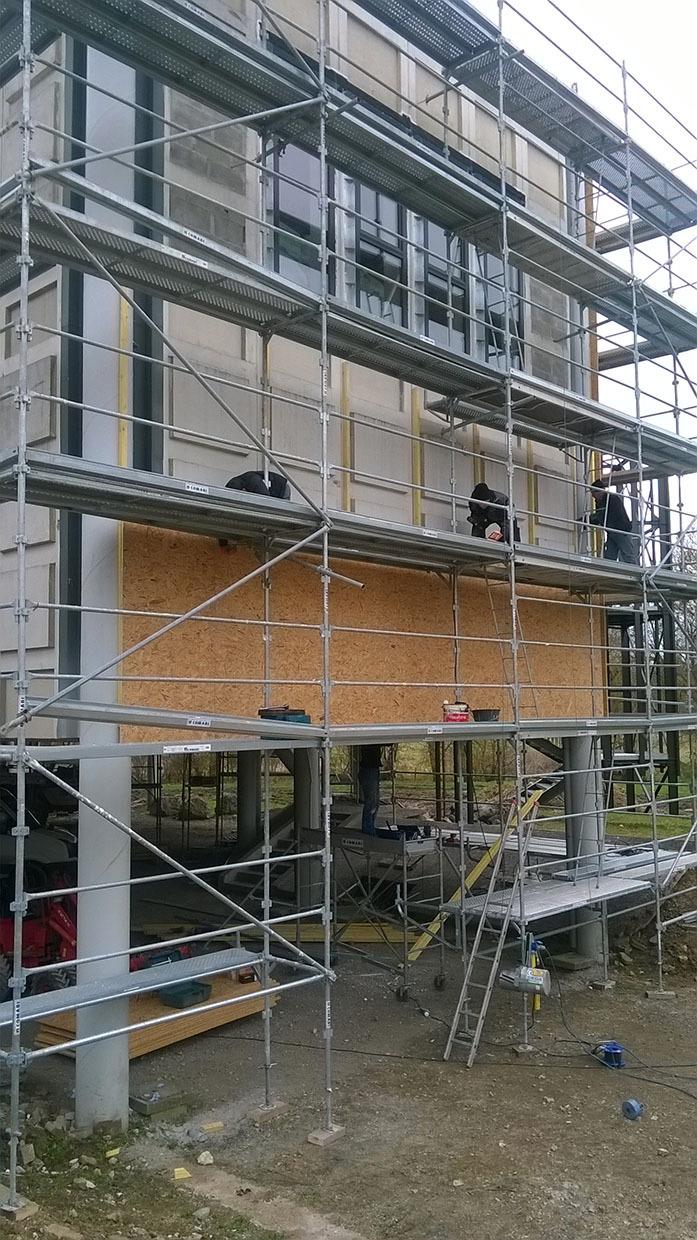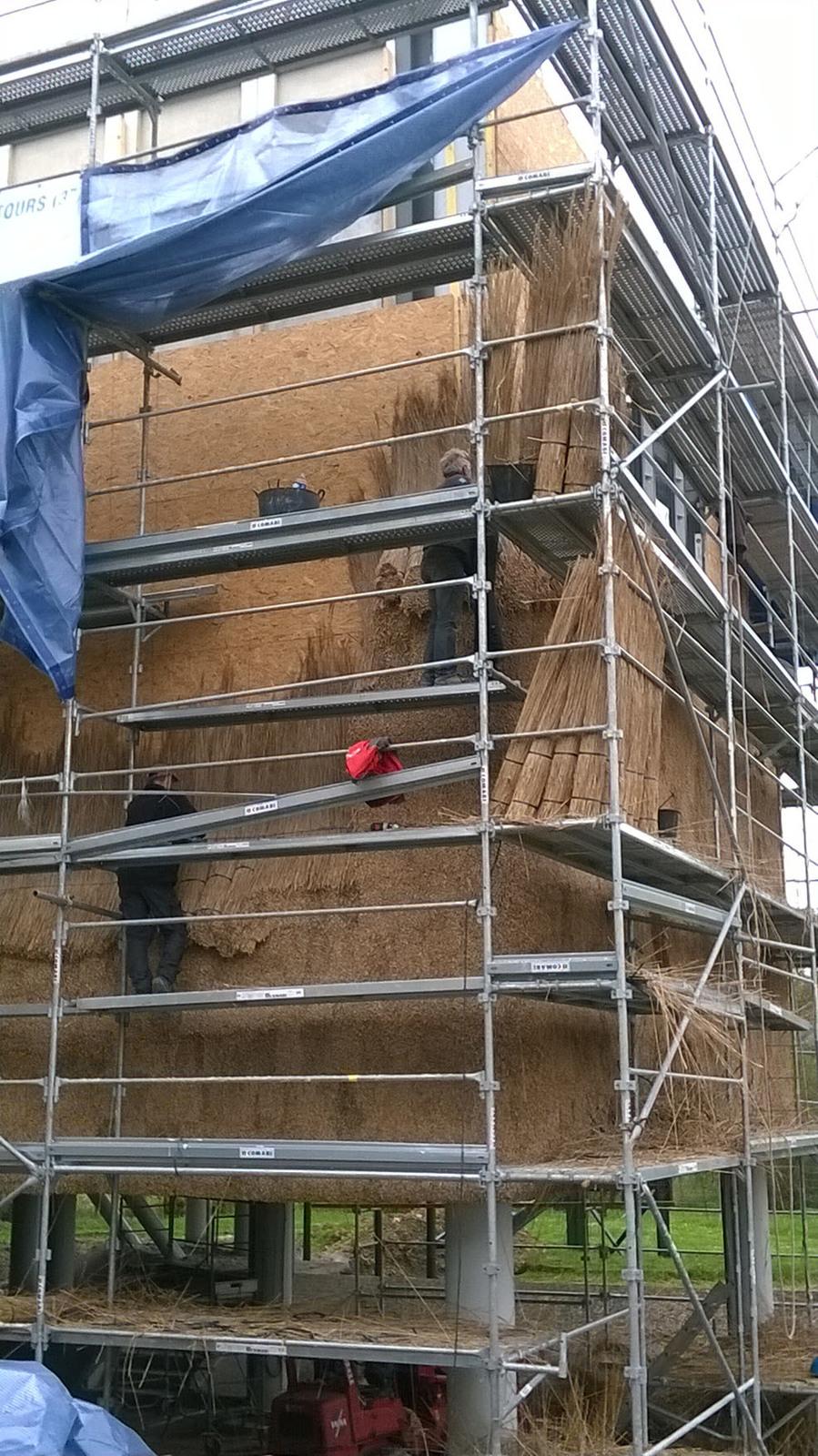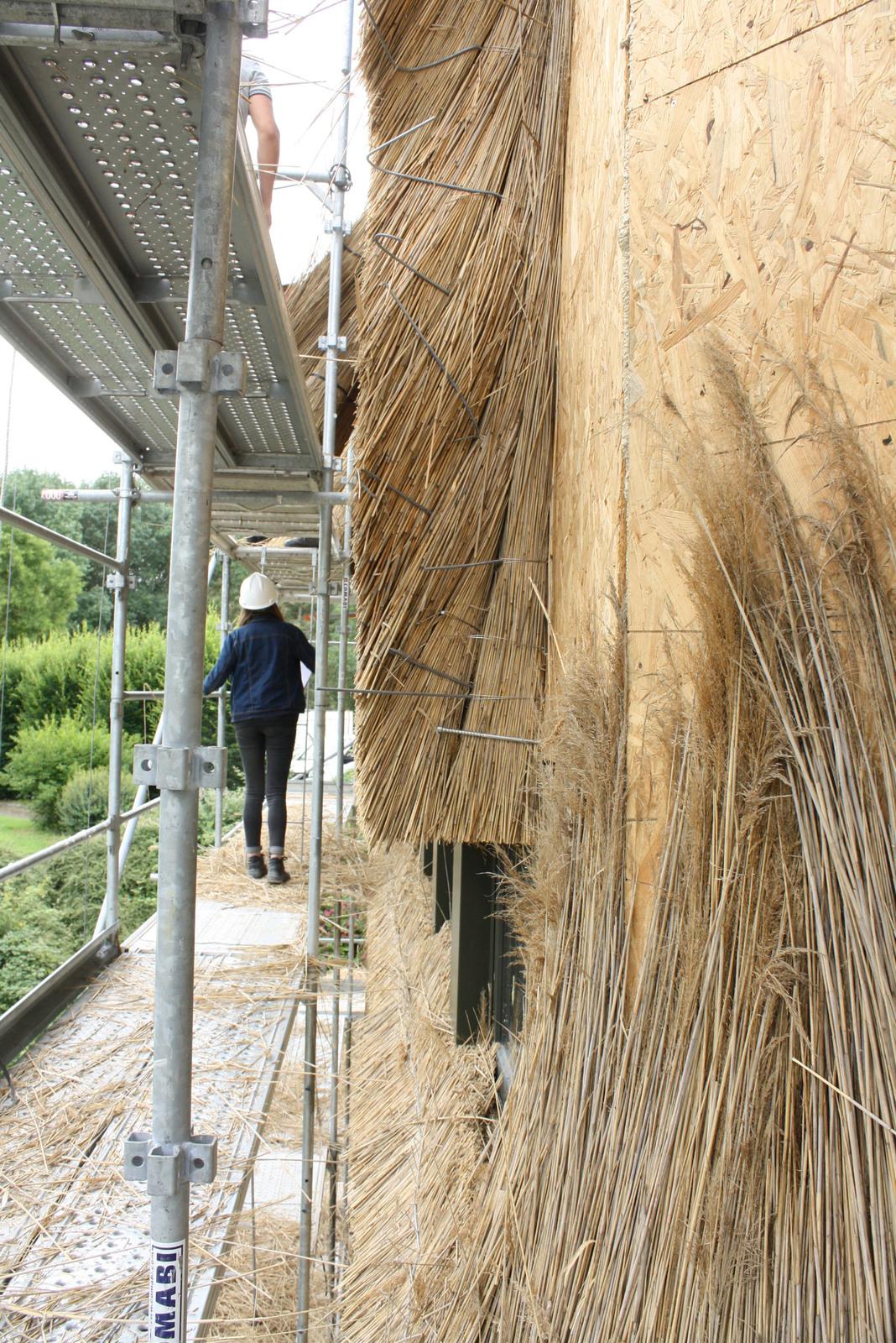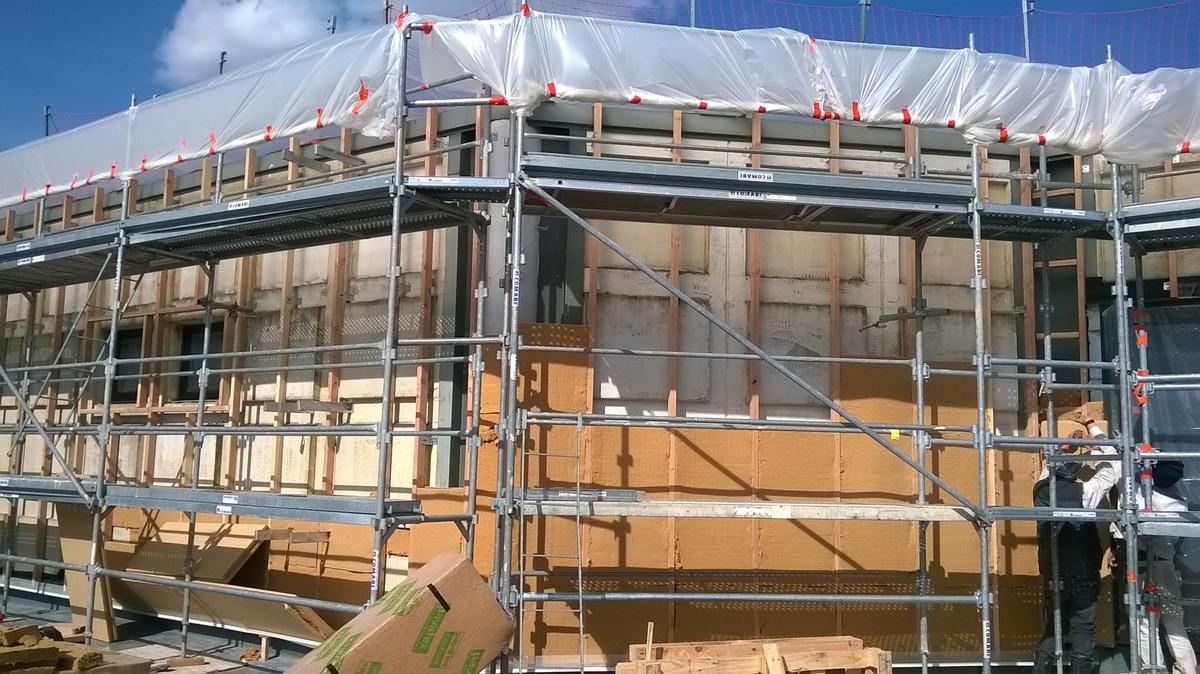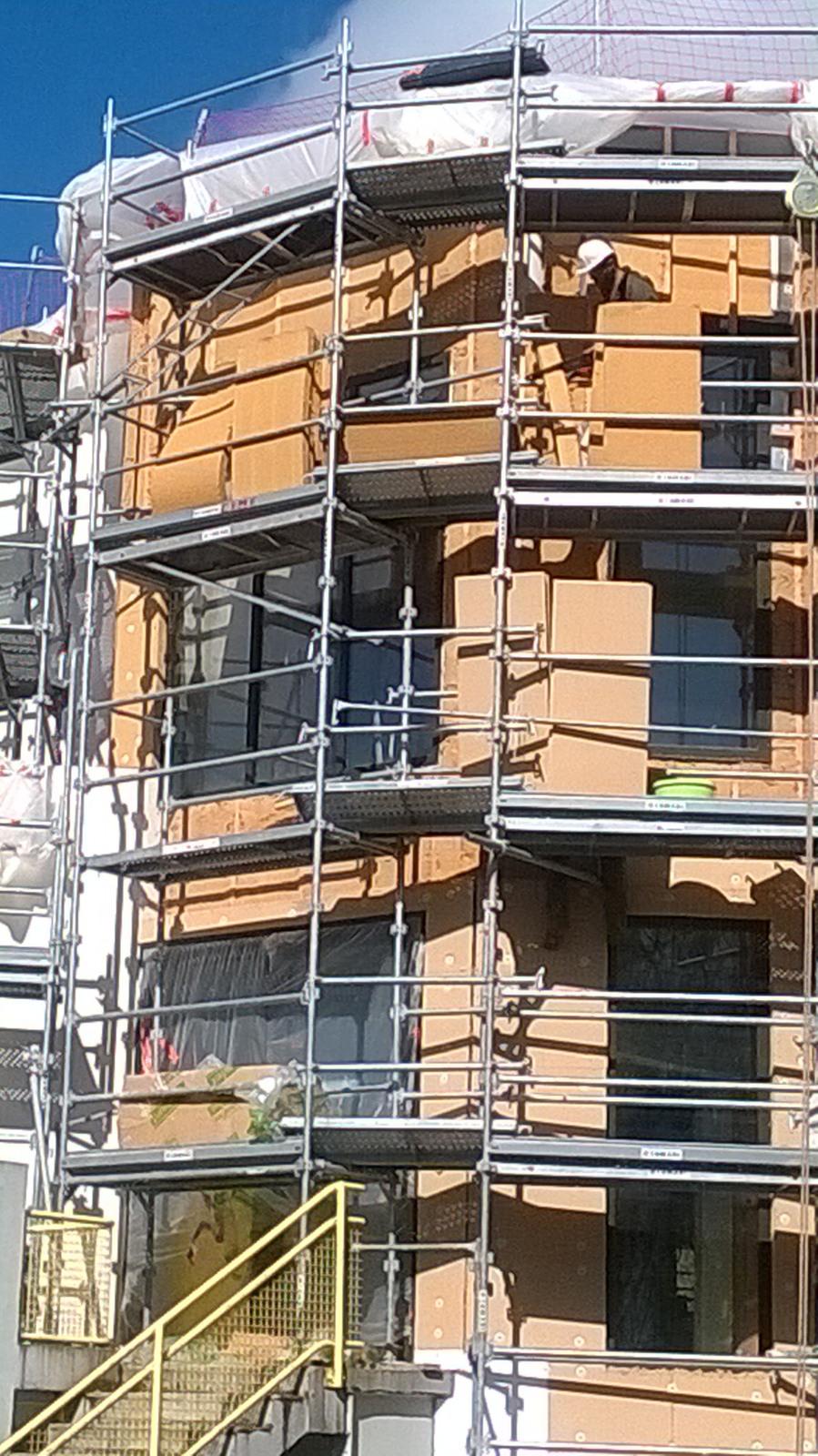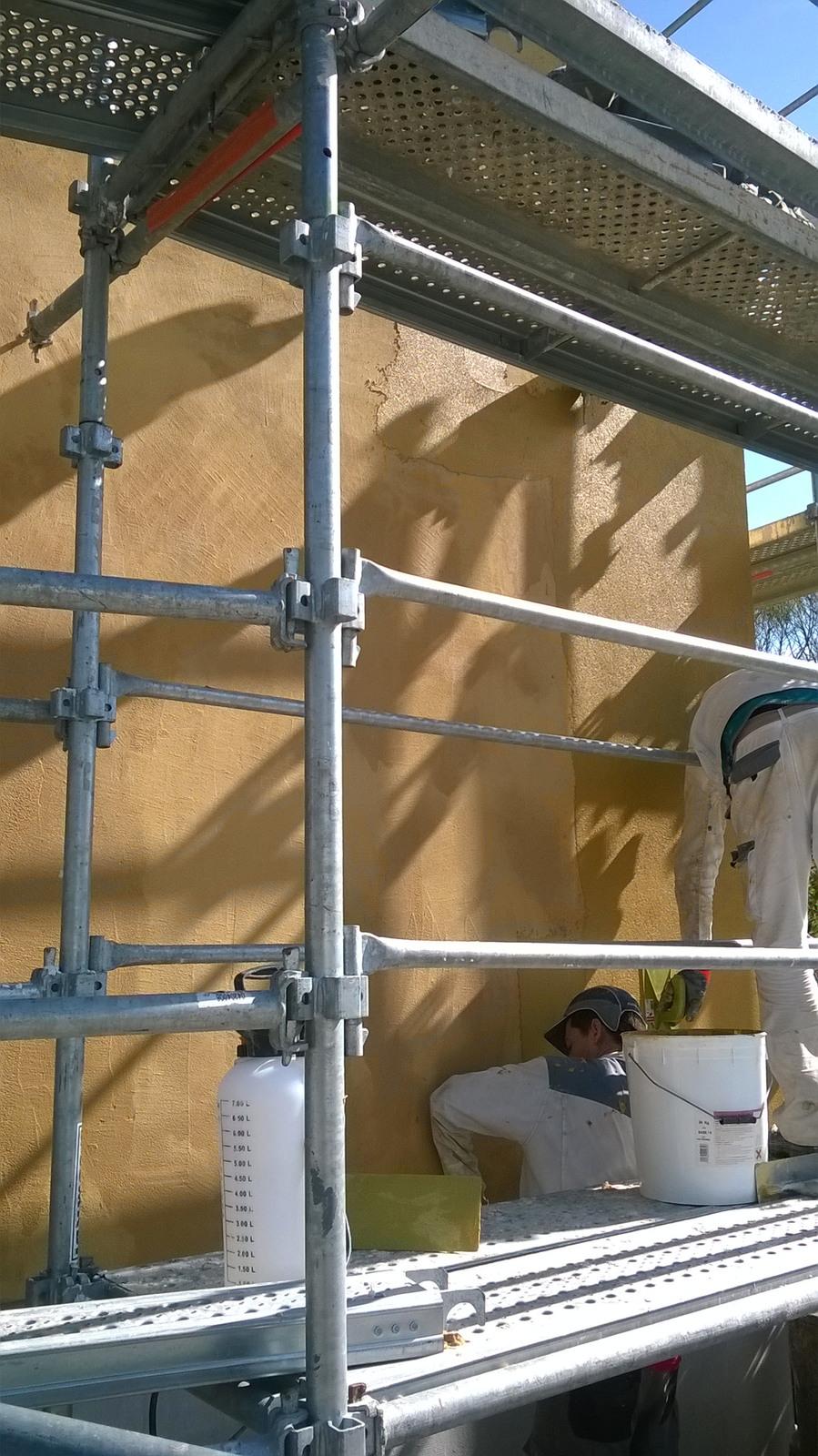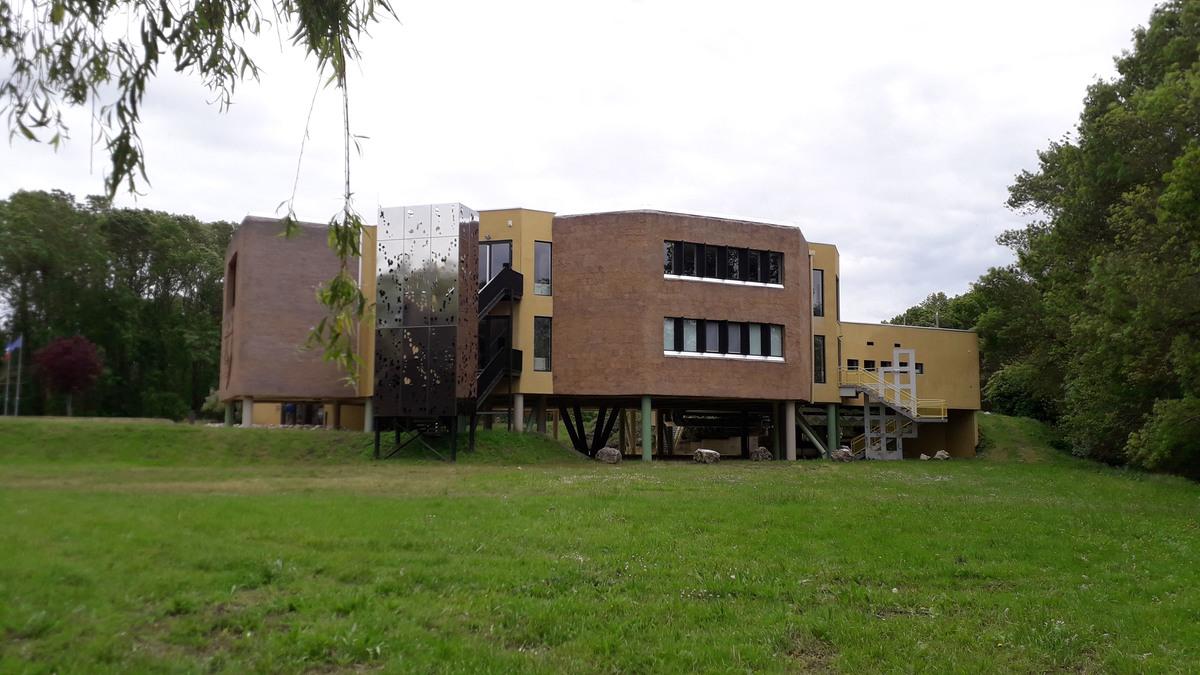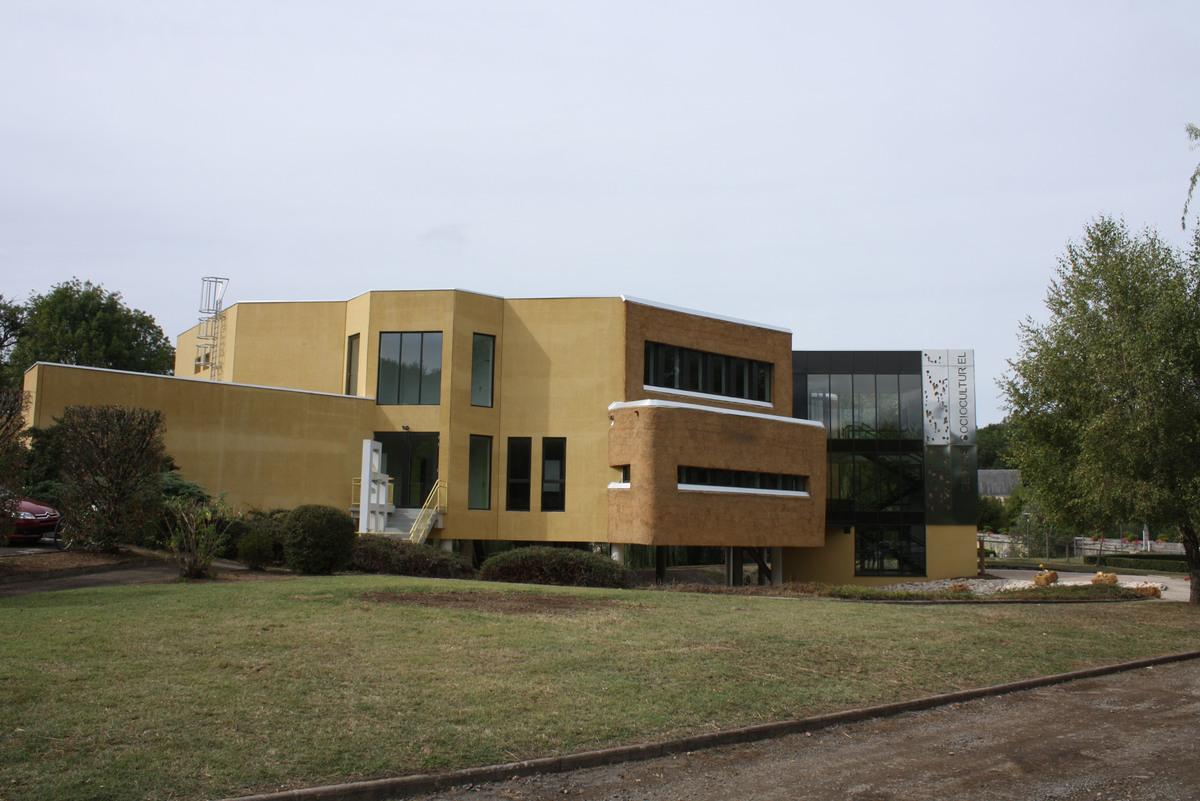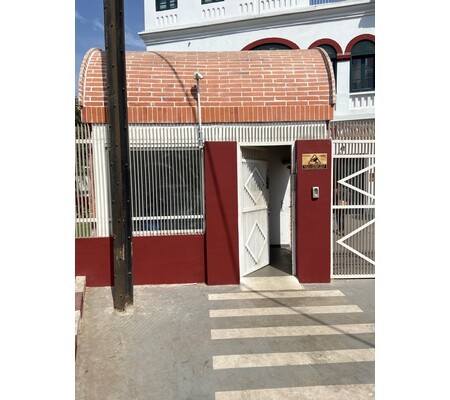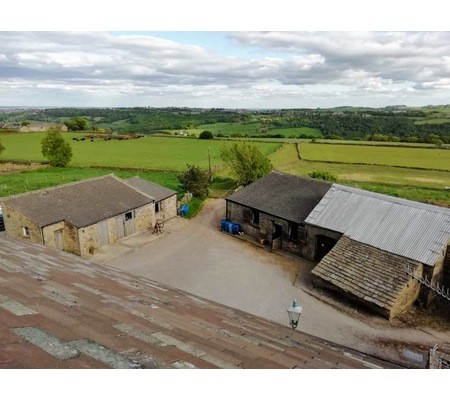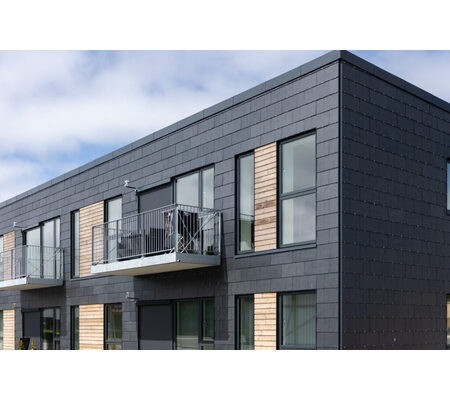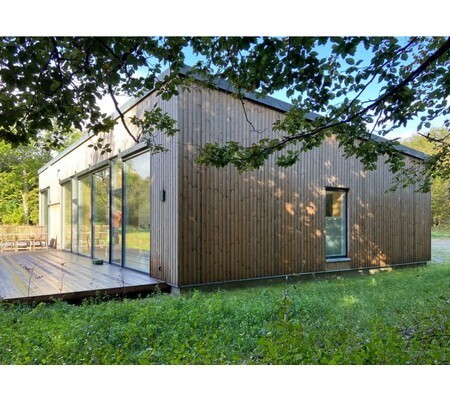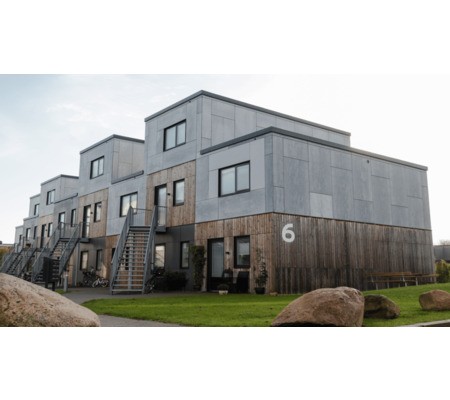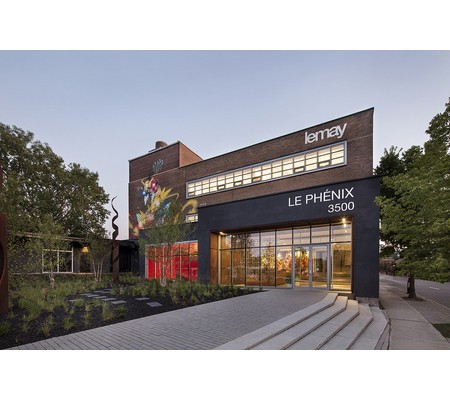Renovation of the sociocultural center of Val de Cisse
Last modified by the author on 05/06/2019 - 14:14
Extension + refurbishment
- Building Type : Concert or conference hall, theater
- Construction Year : 1985
- Delivery year : 2018
- Address 1 - street : Avenue des Courvoyeurs 37530 NAZELLES-NEGRON, France
- Climate zone : [Cfb] Marine Mild Winter, warm summer, no dry season.
- Net Floor Area : 1 389 m2
- Construction/refurbishment cost : 2 067 311 €
- Number of Seat : 900 Seat
- Cost/m2 : 1488.34 €/m2
-
Primary energy need
93.17 kWhep/m2.an
(Calculation method : RT 2012 )
The Nazelles-Négron town hall has implemented an agenda 21 in which it wishes to work for the energy and ecological transition in response to the challenges of social equity, economic development and preservation of the environment throughout its territory .
Among the shared and sustainable actions to be implemented, such as to work for the energy renovation of the built heritage, the municipality naturally took an interest in its own buildings and sought to improve its energy balance by favoring ecological solutions and natural materials.
The present program consisted of the improvement of the energy performances, the compliance of accessibility, the setting to the electrical and fire safety standards, the acoustic improvement, the expansion of the toilets and the layout of the library.
The intervention on thermal renovation and accessibility should not distort the architectural part of the previous architects and achieve, thanks to a vegetal envelope, to integrate the building in its environment while increasing its readability in the city entrance.
The desired energy performance level BBC Effinergie renovation were achieved by the modification of the gas boiler, radiators, air treatment, the improvement of natural and artificial lighting, but especially by the replacement of the windows and doors. insulation of the facades and the underside.
Sustainable development approach of the project owner
The town hall of Nazelles-Négron has implemented an agenda 21 that it translates including through built projects realized or coming to promote the link and exchange between the inhabitants and generations. Wishing to work for the energy and ecological transition in response to the challenges of social equity, economic development and preservation of the environment throughout her territory she has, among other things, turned to the energy renovation of her built heritage in the objective of improving the energy balance by focusing on ecological solutions and natural materials.
The municipality is also open to the implementation of natural materials until the experiment. This real and concrete approach was a factor of stimulation for the architect in the creativity and the first proposal of the project which received a very enthusiastic welcome from all the elected representatives.
Architectural description
Given the context of immersion in nature, the architect focused on the use of biosourced materials in the treatment of facades and proposed to offer a building to the plant skin as thermal insulation, acoustic insulation, and coating on large facades. What is more obvious than the use of stubble, emblematic plant of wetlands. His approach was radical, and especially pointed the desire to innovate and affix a resolutely contemporary line despite the use of ancestral material. This living material adorns the adjoining activity rooms such as the new library completely refurbished, the entertainment rooms, the workshop of the old to indicate the dynamism of this center through the associative activities. The activity at the heart of this stubble is reinforced by that of spinning martinets joining their nesting boxes on the north-east facade, a pose made in connection with the local association SOS Martinets. The warm color of the reed will mature to a gray mantle exacerbated by the vivid contrast of the lime framing it. The external thermal insulation made of compressed wood fiber covered with a lime plaster covers all the vertical circulations and the technical rooms. The contemporary touch is brought to the site by a material that complements the balance of earth, water and metal elements. Like the bark of the plane tree protecting the living stream, the main entrance and the fire escape are adorned with a perforated veil of annealed mirror-polished stainless steel. These functional organs identify themselves clearly while offering a reflection of their environment. The perforations reveal the landscape on the staircase of the main entrance through the carpentry dotted with openings so that the spectators can admire the remarkable context of the center. The rehabilitation of the underside by its thermal insulation and acoustic plates made of wood fiber / lime, now offers a protected area, friendly open to residents through a protected area from the weather and hosts shows or petanque competitions. Colorful, illuminated, this space is in communion with the garden, the river and the multi-generational park.
See more details about this project
http://www.caue-observatoire.fr/ouvrage/rehabilitation-centre-socio-culturel-val-de-cisse/Photo credit
180 ° workshop
Contractor
Construction Manager
Stakeholders
Company
FCA
F.Blancher - contact[at]fca-touraine.fr / 02 46 65 08 20
Thermal insulation from the outside - Coatings
Company
SARL BOUGEARD
M.BOUGEARD - chamier35730[at]gmail.com / 02 99 88 84 71
Façade thatched
Company
PEYON
G.SEGUIN - contact[at]peyon.fr / 02 47 30 69 69
Exterior woodwork and interior woodwork
Thermal consultancy agency
EFFILIOS
contact[at]effilios.fr / 05 49 03 22 86
Other consultancy agency
DUPIN
bejm[at]orange.fr / 02 47 37 49 50
Building design office
Structures calculist
Impact acoustic
contact[at]impact-accoustic.com / 01 39 62 08 65
Others
Atelier Atlante
atelier.atlante[at]gmail.com / 09 65 20 06 32
Grounds
Energy consumption
- 93,17 kWhep/m2.an
- 168,96 kWhep/m2.an
- 229,70 kWhep/m2.an
Envelope performance
- 0,60 W.m-2.K-1
Systems
- Condensing gas boiler
- Water radiator
- Other hot water system
- No cooling system
- Double flow heat exchanger
- No renewable energy systems
Urban environment
Product
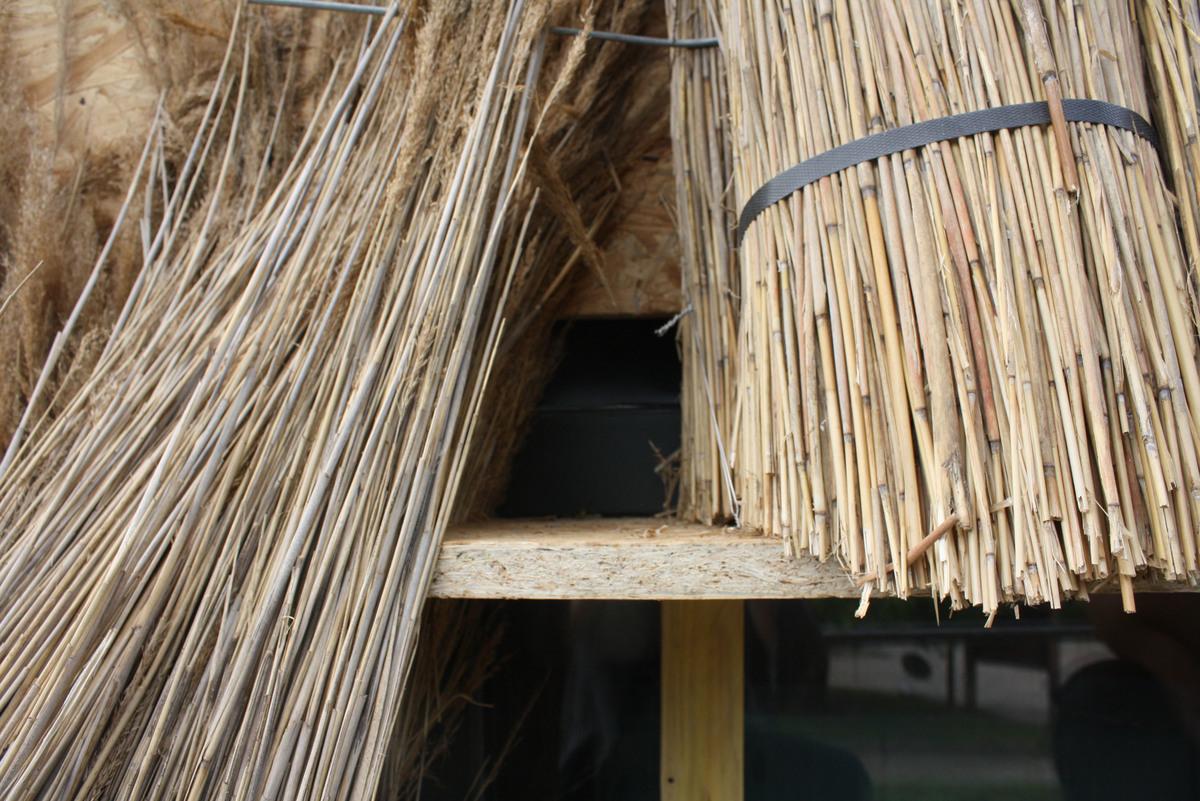
Finishing work / Partitions, insulation
Various bio-based materials and techniques of implementation enter into the renovation of this building.
The extension for the creation of the dressing room of the theater has been designed wood frame insulated by wood fiber (Pavaflex).
The insulation of existing facades has been achieved through two different and innovative techniques:
- Insulation Stubble on wooden and OSB cleats fixed on concrete façade: The peripheral activity rooms have been requalified using vertical thatch. Concurrently assuming the roles of insulation and finishing, this unprocessed natural product has been implemented for the first time in France in renovation applied on concrete facade. It offers a thermal mantle and assumes its share of acoustics.
We adopted the establishment of a wood frame between the outgrowths of the cells to fix the stubble support OSB25mm. Camargue reed boots are fixed using stainless steel cables, screws and rods thanks to the ingenious tools manufactured by the thatched cottage. The air space was blocked at the top and bottom of the façade as well as around the joinery by wooden battens reinforced by the application of the acrylic foam BB flex. The singular points such as the rounding of the columns, the connection with the acroterium, connection with the ITE, connection with the wood fiber plates / lime of the underside have been treated meticulously.
- Insulation Fiber wood on wood frame fixed on concrete facade: The distribution areas and technical rooms are identified by a different technique, compressed wood fiber with a lime plaster finish done with great professionalism by the company FCA Touraine which had to face many singular points.
Usually applied on wood structure these two materials (stubble and wood fiber) were to be placed on a facade prefabricated concrete with alveolar pattern with differences in thicknesses of more than 240mm.
We adopted the establishment of a wood frame between the outgrowths of the cells to fix the stubble support OSB25mm. Camargue reed boots are fixed using stainless steel cables, screws and rods thanks to the ingenious tools manufactured by the thatched cottage.
The air space was blocked at the top and bottom of the façade as well as around the joinery by wooden battens reinforced by the application of the acrylic foam BB flex. The singular points such as the rounding of the columns, the connection with the acroterium, connection with the ITE, connection with the wood fiber plates / lime of the underside have been treated meticulously.
The M3 stubble classification required fire tests. Models were made by the thatch house and submitted to CSTB. Despite the positive tests, the technical controller did not follow.
Fiber: The biggest challenge the team had to face was the installation of the wood fiber insulation. The fixing on masonry being the subject of a technical opinion the implementation recommended has been respected. But the particular configuration of the existing honeycomb façade led to point thicknesses of insulation of more than 540 mm that can not be screwed.
A wood frame lined with soft wood fiber and rigid compressed wood fiber plates screwed to the frame were put in place. The company has conducted numerous tear-off tests to confirm the strength of the system. Considered as a non-routine technique, the system was not insurable. The client has confirmed the installation technique despite the negative opinion of the technical controller and subscribes a particular damage insurance. The 6 months long administrative procedures led to construction delays that the town hall assumed.
Paints: vegetable type (Algo-Pro);
The floors: oak treated with oil;
Soft floors in linseed oil based materials, wood flour on jute frame (Marmoleum);
Fermacell gypsum partitions.
In perfect correspondence with the guidelines given by the contracting authority and the state of mind of the 180 ° agency
Construction and exploitation costs
Indoor Air quality
Comfort
GHG emissions
- 10,00 KgCO2/m2/an
- 34,00 KgCO2 /m2
Life Cycle Analysis
Reasons for participating in the competition(s)
Le choix de la rénovation du bâti limitant les démolitions (déchets) et le recours à des ressources en matériaux est en soit un premier acte de réduction de l'impact carbone. Au delà, c'est par la recherche du recours aux matériaux renouvelables et biosourcés à toutes les étapes du projet, ainsi que par la mobilisation des acteurs locaux pour répondre à ce marché que ce bâtiment s'inscrit dans une démarche bas carbone.
Building candidate in the category

Low Carbon






